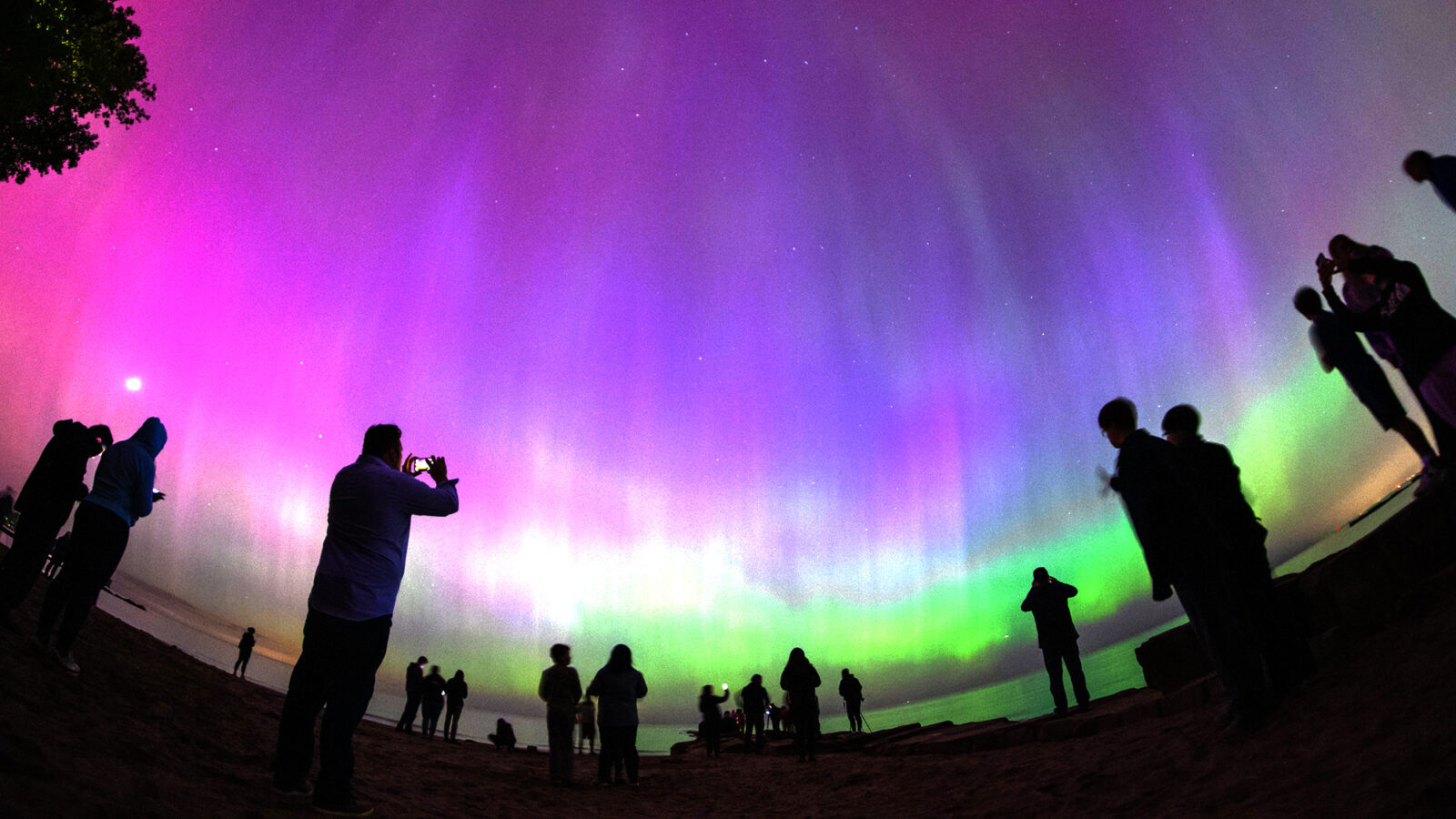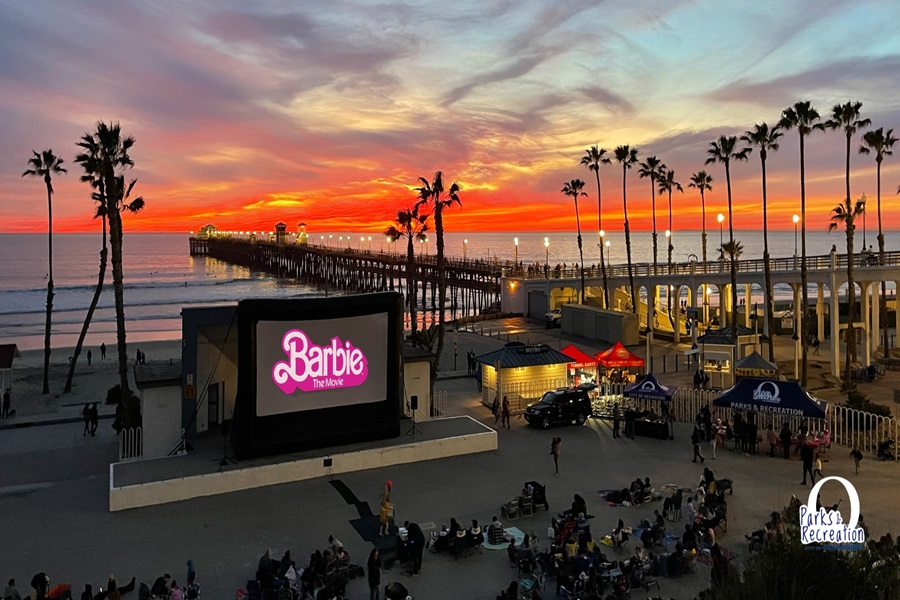Cleveland, OH
Jim Brown, legendary NFL running back, dead at 87
/cloudfront-us-east-2.images.arcpublishing.com/reuters/DDLZT3X2WVNAXMB5YNLBNFBUQI.jpg)
May 19 (Reuters) – Jim Brown, one of the greatest running backs in the history of the National Football League who quit the game at the height of his career to act in Hollywood movies and add his voice to the civil rights movement, has died. He was 87.
Brown died on Thursday night, his wife Monique Brown said on Instagram.
“To the world he was an activist, actor, and football star. To our family, he was a loving and wonderful husband, father, and grandfather. Our hearts are broken,” she wrote.
As an explosive fullback for the Cleveland Browns, Brown combined power, speed, intensity and size (6 feet 2 inches, 230 pounds) in a way not seen in the NFL before he joined the league in 1957. He announced his retirement in July 1966 while in London filming his second movie, “The Dirty Dozen.”
He was a prominent figure in the Black Pride movement of the 1960s and a friend of Malcolm X and Louis Farrakhan as well as Huey Newton, co-founder of the militant Black Panthers group.
Brown was dogged by allegations of violence against women over the decades though never convicted. Brown admitted in his 1989 memoir to slapping women.
“In a perfect world, I don’t think any man should slap anyone,” Brown wrote. “I don’t start fights, but sometimes I don’t walk away from them. It hasn’t happened in a long time, but it’s happened, and I regret those times. I should have been more in control of myself, stronger, more adult.”
Brown led the NFL in rushing in eight of his nine seasons and was voted the league’s most valuable player four times. He held 20 league records when he retired at age 30, including most rushing yards and most rushing touchdowns. In 1999, the Sporting News put him atop its list of the 100 greatest players of the 20th century.
Brown summed up his style by saying: “Make sure when anyone tackles you he remembers how much it hurts.”
“I didn’t retire because I was broken down and slow,” Brown told Sports Illustrated in 2015. “I retired because it was time to retire and do other things.”
NFL Commissioner Roger Goodell said in a statement on Friday that Brown was one of the most dominant players to ever step on any athletic field and also a cultural figure who helped promote change.
“During his nine-year NFL career, which coincided with the civil rights movement here at home, he became a forerunner and role model for athletes being involved in social initiatives outside their sport,” Goodell said.
“He was certainly the greatest to ever put on a Browns uniform and arguably one of the greatest players in NFL history,” Browns owners Jimmy and Dee Haslam said in a statement.
BLACK ACTIVISM
In 1967, Brown joined other activist athletes such as basketball’s Bill Russell and Lew Alcindor, who later changed his name to Kareem Abdul-Jabbar, in supporting Muhammad Ali’s refusal to be drafted into the U.S. military.
Brown also sought to empower the Black community by starting the Negro Industrial Economic Union in the 1960s to help African Americans in the business world and in the 1980s founded Amer-I-Can, a program to help ex-convicts and former gang members by focusing on job skills and nonviolence.
“I was basically a proponent of economic development as a way to equality, social equality,” Brown told the Cleveland Plain Dealer in 2013.
Brown was one of the first U.S. athletes to parlay his on-field accomplishments into another full-time career, which included more than 40 movies and television shows. His rugged good looks and quiet charisma made him a natural for tough-guy roles and he made his first movie, the Western “Rio Conchos,” in 1964 while still with the Browns.
In addition to “The Dirty Dozen,” (1967) his early works included “Ice Station Zebra” (1968) and 1970s “blaxploitation” films such as “Three the Hard Way” (1974), “Slaughter” (1972) and “Black Gunn” (1972).
Brown’s 1969 movie “100 Rifles” featured a rare interracial sex scene with Raquel Welch. He posed nude for Playgirl magazine and wrote frankly about his busy sex life in his 1989 book “Out of Bounds.”
Later movies included the blaxploitation spoof “I’m Gonna Git You Sucka” (1988) and Spike Lee’s “He Got Game” (1988).
VIOLENCE AGAINST WOMEN
Brown was accused of violence against women multiple times including a 1965 case in which he was acquitted of assaulting an 18-year-old woman. In 1968, he was accused of throwing a girlfriend from a balcony in an argument but she told police she fell.
Battery charges in an incident involving two women were dropped in 1971 and a rape charge was dismissed in 1985 due to inconsistent testimony from the accuser.
In 1999, his second wife, Monique, told authorities Brown had threatened to kill her. She later recanted and he was convicted only of smashing the windows of her car. Brown took a six-month jail term because he considered an alternative sentence that included counseling, community service and probation to be unfair. He served less than four months.
He later told the Los Angeles Times he curbed his violence through a self-improvement program that operates in California prisons.
In 1978, he was convicted of assaulting professional golfer Frank Snow in a dispute on a golf course.
James Nathaniel Brown was born on St. Simons Island, Georgia, on Feb. 17, 1936, and spent his early years with his great-grandmother after his father left the family and his mother moved away to work as a maid.
He rejoined his mother in Manhasset, New York, and became a four-sport star in high school. He won a scholarship to Syracuse University where he was an all-American in lacrosse as well as football and a star on the basketball team.
The NFL this year honored Brown by renaming the league’s rushing title the Jim Brown Award. Some critics said it was disgraceful for the NFL to honor a man accused of violence against women.
“To champion Brown as some kind of hero is as brutal a blow as the ones he was repeatedly accused of delivering,” USA Today sports columnist Nancy Armour wrote.
Looking back, Brown said he was not concerned about public perceptions.
“I’m not interested in trying to work on people’s perceptions,” Brown said in a 1999 documentary on ESPN Classic. “I am who I am, and if you don’t take the time to learn about that, then your perception is going to be your problem.”
Reporting By Paul Grant; editing by Jasper Ward
Our Standards: The Thomson Reuters Trust Principles.

Cleveland, OH
67-year-old man murdered on Cleveland’s East Side: Police

CLEVELAND, Ohio (WOIO) – A 67-year-old is dead following a shooting on Cleveland’s East Side, according to investigators.
Cleveland Division of Police Sgt. Wilfredo Diaz says officers found the man dead with gunshot wounds in the 15800 block of Lotus Avenue.
The Cuyahoga County Medical Examiner’s Office identified the victim as Charles Davis, of Cleveland.
The circumstances of the shooting are unknown.
The Cleveland Division of Police says there are no arrests.
Copyright 2024 WOIO. All rights reserved.
Cleveland, OH
The Apocalypse That Wasn’t – WhoWhatWhy

The solar storm brought a lot of lovely aurora pictures but no Great Blackout. Maybe next time.
|
Listen To This Story |
I’ve noticed that there is an elegant process by which any scientific event, especially the extraordinary, can be converted efficiently into conspiracy theory. “Awe” transmutes to “fear”; “novel” translates to “terminal.” If it’s big enough, or strange enough, it will eventually crystallize as evidence of impending doomsday.
So I was surprised by the muted reaction, even in fatalist circles, to the recent solar storm and resulting auroras that spread across the northern hemisphere. For a few days, social media was a lovely place to look at pictures.
The eschatological thinking is there, of course. During the kind of storm we saw recently, bursts of high-energy solar plasma splash into the Earth’s magnetic field, which can interfere with communication satellites and the long-range fibers that facilitate modern life. In 1859, the most powerful recorded solar storm supposedly ignited telegraph wires and electrocuted operators in what became known as the Carrington Event. Today, the risk is to our most precious resource: the internet.
In 2021, Sangeetha Abdu Jyothi, a computer scientist at the University of California, Irvine, published a paper called “Solar Superstorms: Planning for an Internet Apocalypse.” That paper, a response to the world being blindsided by the “black swan” event of the COVID-19 pandemic, elucidated the risks to the world’s telecommunications systems of “solar superstorms that can potentially cause large-scale Internet outages covering the entire globe and lasting several months.”
With the concept of an “internet apocalypse” thus planted, the media was primed for some hysteria. In 2023, a couple of press releases kicked the fear into a higher gear. That March, there was a NASA statement about tools the agency uses to “sound the alarm for dangerous space weather.” Two months later, a press release from Berkeley’s Physics Department talked about the Parker Solar Probe, launched in 2018 and now close enough to the sun to study the solar winds.
Outlets unafraid to play fast and loose with the truth spun this up. The UK’s Mirror, for one, wrongly interpreted the Probe’s mandate as a “NASA mission to prevent ‘internet apocalypse’ which could leave people offline for months.” That kind of coverage in turn inspired a flurry of more responsible news coverage that, while accurate, is still just as dire as the less-rigorous news. Pulling one more or less at random, here’s how a USA Today story frames the internet apocalypse:
If the internet fails on a scale that large, the consequences could be devastating — causing billions of dollars of losses per day to the U.S. economy and impeding the production and supply chains for essential materials like food and medicine.
The same day, The Washington Post offered its take:
The “internet apocalypse,” as it’s called, has recently captured imaginations on social media, prompting quick-spreading misinformation about nonexistent NASA warnings and speculation about what the hyper-online might do with themselves in an offline world. Apocalypse preppers, religious doomsday Redditors and writers have all, at some point, seized on the idea.
The Post story is notable for quoting Jyothi, the computer science professor whose paper raised the issue to public consciousness:
Jyothi says she has felt bad for using the term “internet apocalypse” in her paper. There’s not much ordinary people can do to prepare for such a phenomenon; it falls on governments and companies. And the paper “just got too much attention,” she said.
“Researchers have been talking for a long time about how this could affect the power grid,” she notes, “but that doesn’t scare people to the same extent for some reason.” Losing power also causes one to lose internet, of course.
A few days later, Snopes had to sigh heavily and step in to address the misinformation about this whole internet apocalypse business.
That brings us to March 2024, when another UK tabloid of the sort you’d cross the street to avoid, the Daily Express, dusted off the issue, presumably for some quick hits. (Which Snopes then had to dust off its response to.)
The conditions, then, were perfect for an explosion of high-energy bullshit during this recent geomagnetic storm.
And yet… not so much. I stuck my head in at all the usual digital dives and watering holes serving up frosty mugs of unhinged ranting. Twitter, TikTok, Reddit, Rumble. Nothing. Or at least, nothing special. Not like you’d imagine. Even Facebook could be said to be, and I may come to regret this, normal.
This should be good news, but the journalistic brain is threatened by positive developments. It makes us feel we are doing something wrong if we can’t find a cloud within that silver lining. I’m borderline disappointed when I look at the Fox News site and don’t see anything even remotely apocalyptic.
How things have changed, I think. What happened to the Fox News I remember from 2008? Have you forgotten the Large Hadron Collider?

The Large Hadron Collider, which turned out not to be a black-hole machine. Photo credit: Image Editor / Flickr (CC BY 2.0 DEED)
The Large Hadron Collider sits coiled under the landscape of France and Switzerland, a $9 billion project generally considered — even outside its parent organization, the European science agency CERN — to be the largest and most expensive physics experiment in history. Which history, if some news reports at the time were to be believed, was coming to an end.
The LHC is the culmination of attempts to send subatomic particles faster and faster under colder and colder conditions, to smash them into each other to replicate, for specks of time it takes very large computers to catch, the beginnings of the universe.
For all the excitement generated during the construction of this big quantum donut, there were also fears that the machine would, owing to the physics involved, create black holes that would swallow up the planet, or unnatural energy fluctuations that would manhandle the universe itself. As an ongoing narrative, the news media had carved out quite a tale, with tones ranging from sober evaluations of potential threats to cheeky considerations of the end of the world.
The doomsaying began, in the few years leading up to the September 2008 debut of the machine, with story after story asking whether the LHC might, perhaps, kill us all — though it’s fair to say it entered the public consciousness with a fury in the summer of 2008. That’s when the news media caught on to what great headlines were possible — “end of the world” and “doomsday” being terms to put asses in seats.
Even the most humorless of news outlets managed at least a mention of black holes or related doomsaying in what might otherwise have been reasonable coverage, but there were notable examples of absurdly irresponsible reportage the world over. In the US, Fox News played its contrarian card with a January 2009 story entitled “Scientists Not So Sure ‘Doomsday Machine’ Won’t Destroy World.” A close reading rewards the reader: Not only are the scientists cast as being hopelessly indecisive, but those quotes around “doomsday machine” imply that that’s the actual name of the device. Well, Fox News is telling us, we get what we deserve when we let the lousy Europeans build something called a “Doomsday Machine.”
Here’s more of that network’s refreshing brand of skepticism regarding the impossibility of the LHC ending the world: “FoxNews.com can think of a few other things that didn’t seem possible once — the theory of continental drift, the fact that rocks fall from the sky, the notion that the Earth revolves around the sun, the idea that scientists could be horribly wrong.”
Meanwhile, The Daily Mail was practically trying to suck the eyeballs out of our heads. That outlet’s headlines made Fox seem downright blue-state: “Are We Going to Die Next Wednesday?”
Such was the tenor of coverage for some underground particle experiments in French sheep country. Fifteen years later, here are solar storms that actually forced airlines to reroute planes from the poles to avoid cosmic radiation, that forced astronauts on the International Space Station into hiding, that addled the GPS of farm equipment so badly that at least one tractor drove around in circles, muttering to itself (probably) about the corn never stopping. Here are real threats to drive the most nihilistic headline-writer into ecstasies of pessimism, but the coverage was, across the board, wildly banal.

Perhaps the news media at large is actually being more responsible. Perhaps Fox News decided to exercise more caution since losing a $787.5 million defamation suit to Dominion Voting Systems for its frankly insane election coverage. Or perhaps it’s something in the nature of an internet apocalypse.
Look beyond the Fox News story on the solar storm, down beneath the well-behaved slideshow of aurora snaps. There, where the people live, there are still villagers waving pitchforks at one conspiratorial monster or another. Apropos of nothing in the Fox story itself, its commenters found a way to invoke George Floyd, to deny man-made climate change, and to suggest that liberals will take the auroras as “a sign we need to spew more tomato sauce on priceless works of art and occupy campuses.”
The internet apocalypse did lurk in and among these exchanges. The Great Blackout expressed not as dread, but as aspiration.
The sentiment was best expressed by a commenter named DontNeedUHoes: “Best outcome possible is that it takes out all the internet and cell phones forever. Now that’s when we’ll have some progress and stability.” To which nomadforlife replied, “Can’t love this enough.”
The solar storm wasn’t feared because it promised to bring what many people, particularly those inclined to convert science to conspiracy, most want: a return to an earlier time. A state of being so mythic it could deliver even the seemingly contradictory — progress and stability. So: a phenomenon whose meaning is hope, not fear, which isn’t supported by any model of news or social media currently known to science.
Worry not; you can worry later. The sun runs in roughly 11-year cycles of activity. In 2012, a solar superstorm that may have been as powerful as the Carrington Event just missed us. Sometime between late 2024 and early 2026, the sun will reach what’s called the “solar maximum” again. According to the whispered calculations of the apocalyptic mathematicians, that’s when we may be guaranteed our doomsday, drifting down the sky on ribbons of pastel light, right before the power goes out.
Cleveland, OH
Donovan Mitchell Trade Rumors: Heat a 'Team to Watch' After Eyeing Cavs SG for Years

Brian Babineau/NBAE via Getty Images
The Cleveland Cavaliers’ season ended on Wednesday, and they now face an offseason full of questions.
One of the biggest questions is about star shooting guard Donovan Mitchell, who has been involved in trade rumors before the season even finished.
Of the teams that could add a star this offseason by trading for the 27-year-old, ESPN’s Zach Lowe believes the Miami Heat is one of the teams to watch.
“Miami, to me, is the other team to watch,” he said. “They’re always hunting around, they’ve been connected with Mitchell over the years. They’re lurking and they have a lot of stuff to offer in terms of picks and young players.”
Mitchell, who just wrapped up his second season in Cleveland, averaged 26.6 points, 6.1 assists and 5.1 rebounds per game this year.
He helped lead the Cavs to their first playoff series win since the LeBron James era, though they couldn’t get past the Boston Celtics in the second round with Mitchell sidelined for Games 4 and 5.
While the five-time All-Star found success during his first two years in Cleveland, he could be on his way out this summer.
Along with the Heat, the Los Angeles Lakers and Brooklyn Nets are among the early teams linked to Mitchell. On Wednesday, ESPN’s Brian Windhorst reported that the two teams “have their offers ready” for Mitchell should the Cavs decide to trade him.
Mitchell’s future remains a question mark this offseason, but it’s far from the only one for Cleveland. ESPN’s Adrian Wojnarowski reported after the season-ending loss to the Celtics on Wednesday that the Cavaliers “plan to take time to evaluate” head coach JB Bickerstaff’s future.
The Athletic’s Shams Charania, Joe Vardon and Jason Lloyd also reported that point guard Darius Garland’s representation could be interested in a trade if Mitchell signs a long-term contract extension with Cleveland.
The Cavaliers have taken major strides and emerged as a serious threat in the Eastern Conference for the first time since James left, but things could look very different next year as a big offseason awaits in Cleveland.
-

 Finance1 week ago
Finance1 week agoSpring Finance Forum 2024: CRE Financiers Eye Signs of Recovery
-

 World1 week ago
World1 week agoIndia Lok Sabha election 2024 Phase 4: Who votes and what’s at stake?
-

 Politics1 week ago
Politics1 week agoBiden’s decision to pull Israel weapons shipment kept quiet until after Holocaust remembrance address: report
-

 News1 week ago
News1 week agoTornadoes tear through the southeastern U.S. as storms leave 3 dead
-

 News1 week ago
News1 week agoThe Major Supreme Court Cases of 2024
-

 World1 week ago
World1 week agoA look at Chinese investment within Hungary
-

 Politics1 week ago
Politics1 week agoTales from the trail: The blue states Trump eyes to turn red in November
-

 World1 week ago
World1 week agoBorrell: Spain, Ireland and others could recognise Palestine on 21 May




















